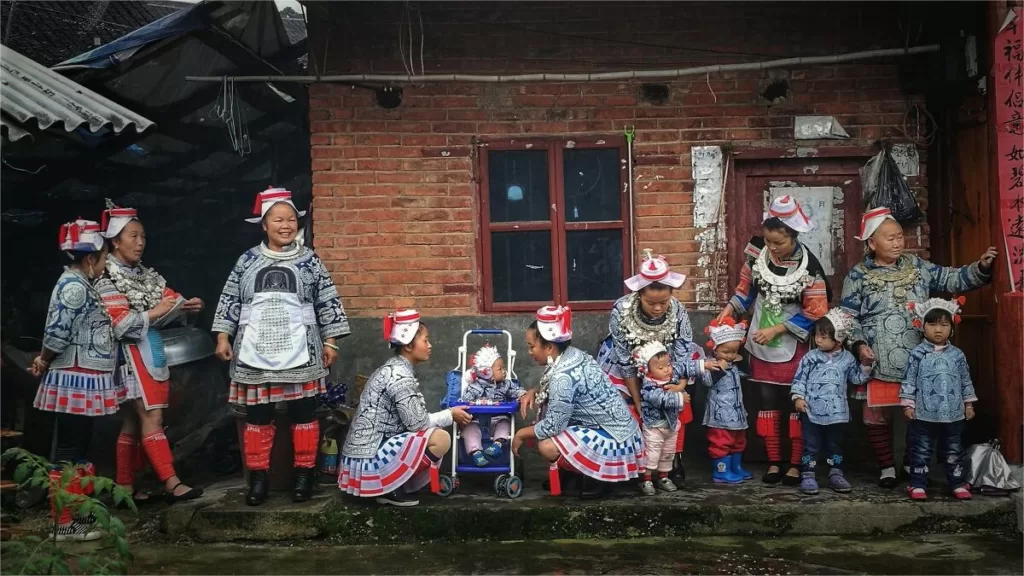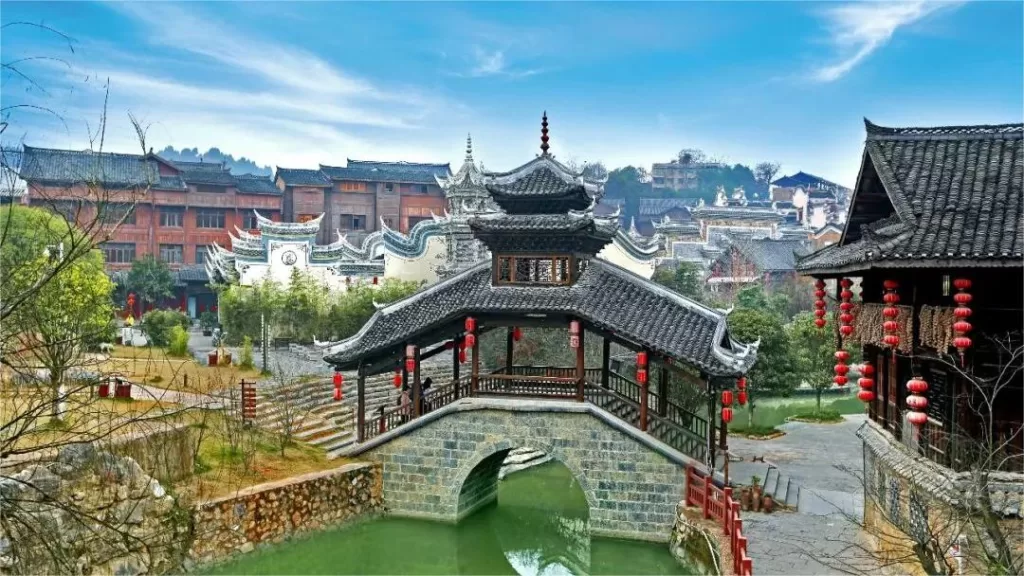Matang Gejia Village – Ticket, Opening Hours, Location, and Highlights


Matang Gejia Village (麻塘革家寨) is located in Longchang Town, Kaili City, and is home to over 400 Gejia people. This community represents a distinct ethnic group in Guizhou Province, China. Despite having their own language, attire, and lifestyle, the Gejia people do not have a written script. They proudly trace their lineage back to the legendary archer Yi, a hero from ancient Chinese mythology known for shooting down nine of ten suns. Historically, they relied on hunting for their livelihood.
Today, Matang Gejia Village offers a glimpse into their unique culture, featuring traditional attire, lusheng dances, bench dances, ancient songs, flying songs, wine songs, love songs, and welcoming songs. Additionally, visitors can admire the exquisite wax printing and embroidery crafted by Gejia women. The village serves as a living testament to the rich heritage and vibrant traditions of the Gejia people, allowing outsiders to appreciate and celebrate their distinct way of life.
Table of Contents
- Basic Information
- Location and Transportation
- Highlights of Matang Gejia Village
- Other Attractions in Kaili
Basic Information
| Estimated Length of Tour | 1 – 2 hours |
| Ticket Price | Free |
| Opening Hours | 24 hours a day throughout the year |
Location and Transportation
Matang Gejia Village is situated within the boundaries of Longchang Town, to the north of Kaili City, Qiandongnan Prefecture. It is approximately 21 kilometers away from the urban center of Kaili and just 2 kilometers from the administrative hub of Longchang Town.
To reach Matang Gejia Village, one can take a local bus from the Kaili West Suburban Bus Station (西郊社会车站), commonly referred to as the Miao Family Bus Station (苗家车站). Board a bus heading towards Longchang or Yudong, alighting at the Matang intersection. The fare is approximately 5 yuan per person, and the journey takes about 40 minutes. Upon arrival at the intersection, the village’s archway is visible from the roadside, and it’s a 20-minute walk from there to the village entrance.
Highlights of Matang Gejia Village
Traditional Attire

Matang Gejia Village is known for the distinctive clothing worn by Gejia women. Young girls don a red-tasseled hat, while married women wear a floral headscarf. Their attire includes wax-dyed and embroidered floral clothing, adorned with a cap-like shoulder cape. Completing the ensemble are pleated skirts, silk ribbons around the waist, tasseled waistbands, silver necklaces, and leg bindings featuring embroidered patterns. The attire is not merely decorative; it encapsulates the history of the Gejia people. Legend has it that their ancestors were skilled warriors, and the red-tasseled hat, originally awarded by an emperor for outstanding military achievements, has been passed down through generations.
The village elders explain that every element of a Gejia woman’s attire holds symbolic significance. The red tassels on a girl’s hat represent the sun, while silver hairpins resemble arrows, and silver rings symbolize bows. The bun at the back of a woman’s head represents the sun, and the crescent-shaped pattern on the clothing symbolizes the moon. The patterns on the garments depict the historical exploits of their ancestors, including leading 9,999 soldiers into battle.
Gejia Wax Printing

Gejia wax printing boasts a rich history, featuring rustic and elegant patterns that often depict nature’s majestic tigers, fierce animals, and various flora and fauna. These designs reflect the Gejia people’s deep yearning for a beautiful life and their profound love for nature. Women in Matang Gejia Village exhibit exceptional talent in wax printing, with each woman being adept at this traditional craft. According to Gejia customs, girls as young as five or six years old learn the art of wax printing and embroidery. As they grow older and prepare for marriage, these women craft their own elaborate wedding attire using these skills.
Other Attractions in Kaili

Xiasi Ancient Town

Kaili Ethnic Museum

Nanhua Miao Village
Guizhou local life, Qiandongnan attractions